" Let's face it. Every one of the nation's finest joined the police force so he or she can speed along on the blue light, breaking as many laws as the neenarr will allow. Come on, you know it's true. But "

Lexus makes a classic Grand Tourer with a modern tech twist
New LC coupe hits the styling and speed buttons, but can be had as a hybrid too
Sometimes, Mother Nature is, shall we say, less than helpful.
Heading down the winds and twists of the Julier Pass, going from Switzerland to Italy, we couldn’t help but enjoy hurling the low-slung coupe from the apex of one hairpin curve to the apex of the next. It was all gelling so well, at that point — the road twisting and turning between vertiginous walls of Alp, with the reward of gorgeous aquamarine blue lakes at the bottom to amble past at pace more sedate. Nature and engineering in perfect harmony, it seemed.

And then we noticed the other cars waving and hooting their horns at us. Surely they’re just pleased to see a passing new car, we thought? Especially one as eye-catching and gorgeous as this. Heedless we pressed on, until the waving arms of one of our colleagues was finally enough to pull us over to the side and find out the reason for all the attempted warnings. Rockfall. A plummeting slice of mountain had closed off the only road tunnel able to lead us through to Italy, so another way would have to be found. This deep in an Alpine valley, you can’t just turn left or right and find your way around — there was now a 190km trek back up the Julier ahead of us, to go around the peaks and back down the St Bernard pass on the other side. And not even a friendly doggy with a quart of brandy to help us on our way.
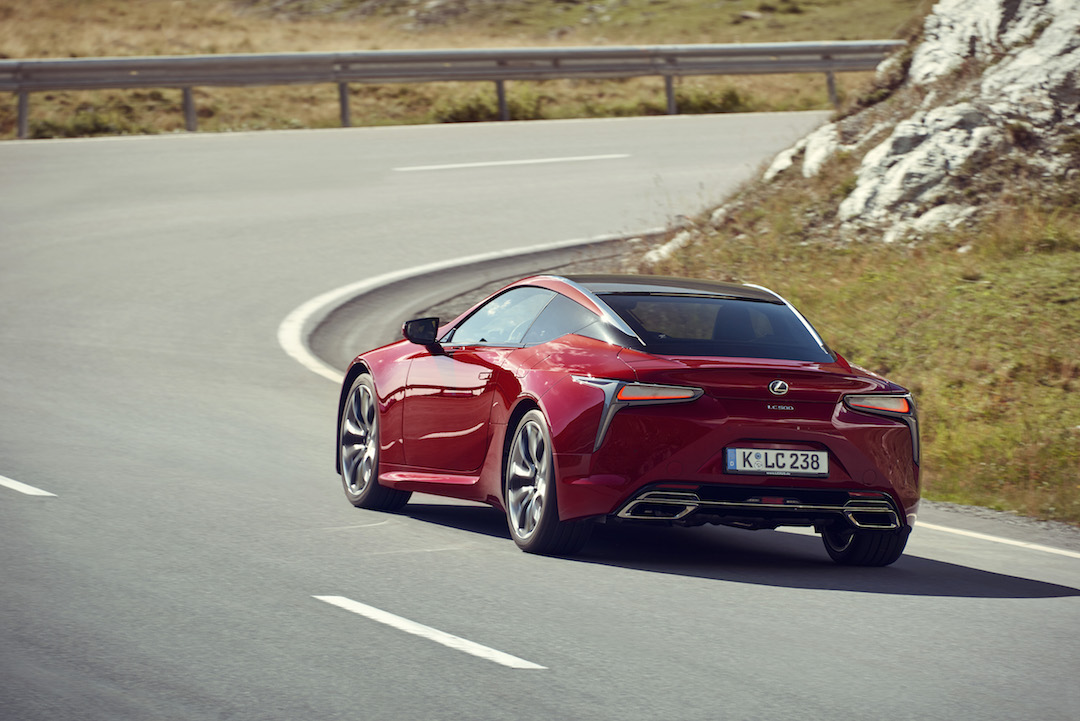
It did seem capricious in the extreme of Nature to thwart our journey in this way. After all, we were driving the first big sports coupe in its class to have a Captain-Planet-pleasing hybrid engine and transmission. Of course, that would have been the other, more saintly, Lexus LC500h Hybrid. At the time of the rockfall, we were using the 477hp naturally-aspirated V8 engined LC500 with its CanAm soundtrack and sky-high emissions. Perhaps Mother Nature had a point, after all.
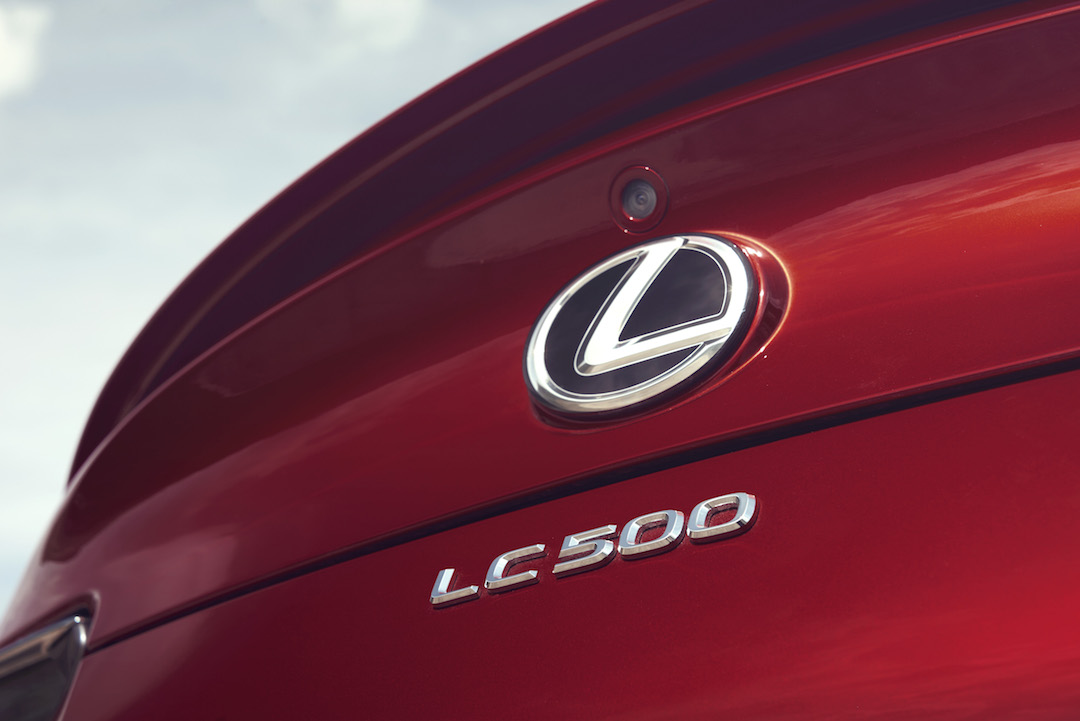
Still, we couldn’t have been in a better car with which to make up some lost time, and with which to climb afresh the Julier Pass. This is really the first time that Lexus has built a car such as this. Before the LC coupe came along, there was of course the LF-A, but that was a proper supercar, with a V10 engine and a Ferrari-like price tag. There was also, it’s true, the SC430 coupe-cabriolet but that was… well, that was pretty shite to be honest.
The LC is most definitely not. It’s based on Lexus’ new GA-L chassis, which will also underpin this year’s new LS saloon and the next-generation of GS. It’s made of a mix of different steels, aluminium, and quite a lot of carbon-fibre-refinforced plastic (CFRP), of which Lexus is so proud that you can find some un-painted sections inside the door frames. What it’s not is especially light. Both this V8 and the Hybrid tip the scales at around the two-tonne mark, so this is not in the lithe-and-agile Porsche 911 mould.
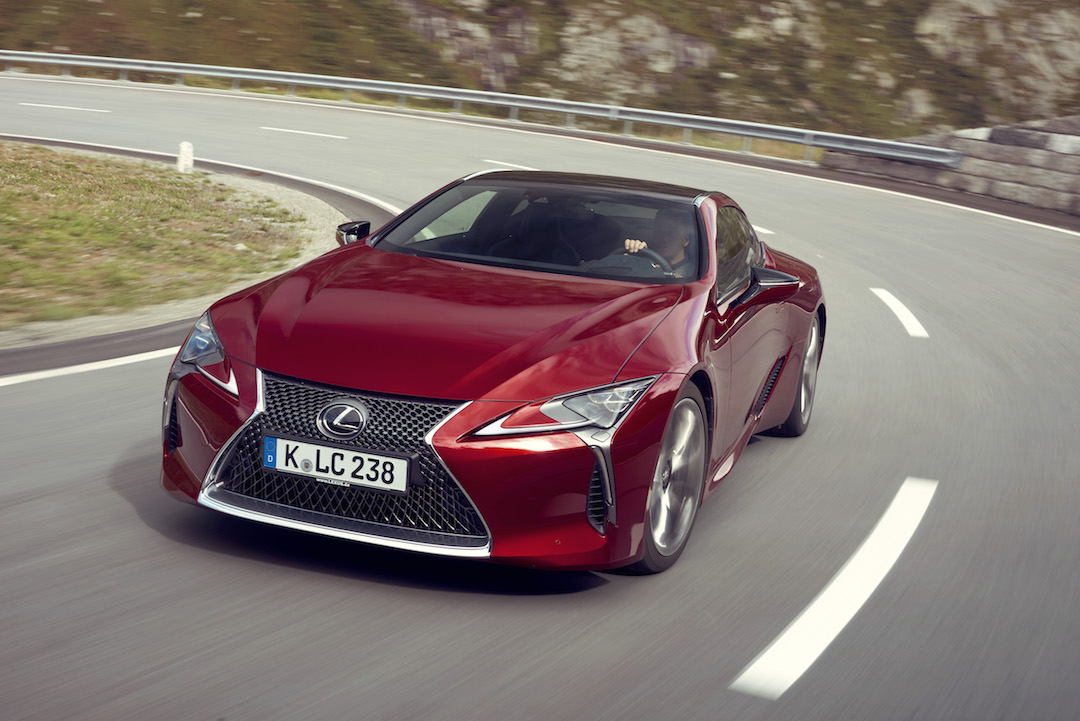
Clearly, no-one told Lexus’ chassis engineers, because not only have they created a suspension setup that allows both that low-as-a-coal-seam bonnet line and the installation of a hefty V8 engine, they’ve also managed to make the LC handle really well.

Our big, black, coupe began to re-ascend the pass on maximum overtake attack alert. Straights are short and dispersed in this neck of the woods, so in order to make good progress, we have to pick our moments. Far more time is spent (and potentially lost) negotiating the tight hairpins and narrow village roads of the Swiss border region. And the LC feels brilliant. The best bit is the steering — it’s not quite bouncing with the feel and feedback that you’d find in a Porsche, or in Jaguar’s F-Type (also notionally a rival) but it’s beautifully, almost perfectly, weighted and totally linear in its responses. It gives you tremendous confidence that the heavy nose isn’t going to hesitate on turn-in, and so it proves; the LC carving through the granite canyons of the Alps like a leather-lined F16. It’s not perfect. While the Lexus Dynamic Handling Pack does include four-wheel steering (which certainly ups the agility quotient) and a limited-slip differential, there’s no mistaking that we do occasionally struggle to put the V8’s power down on those tight, curlicue hairpins. And indeed that the LC is ultimately quite a big, wide, car so you have to choose your moments when chucking it about.
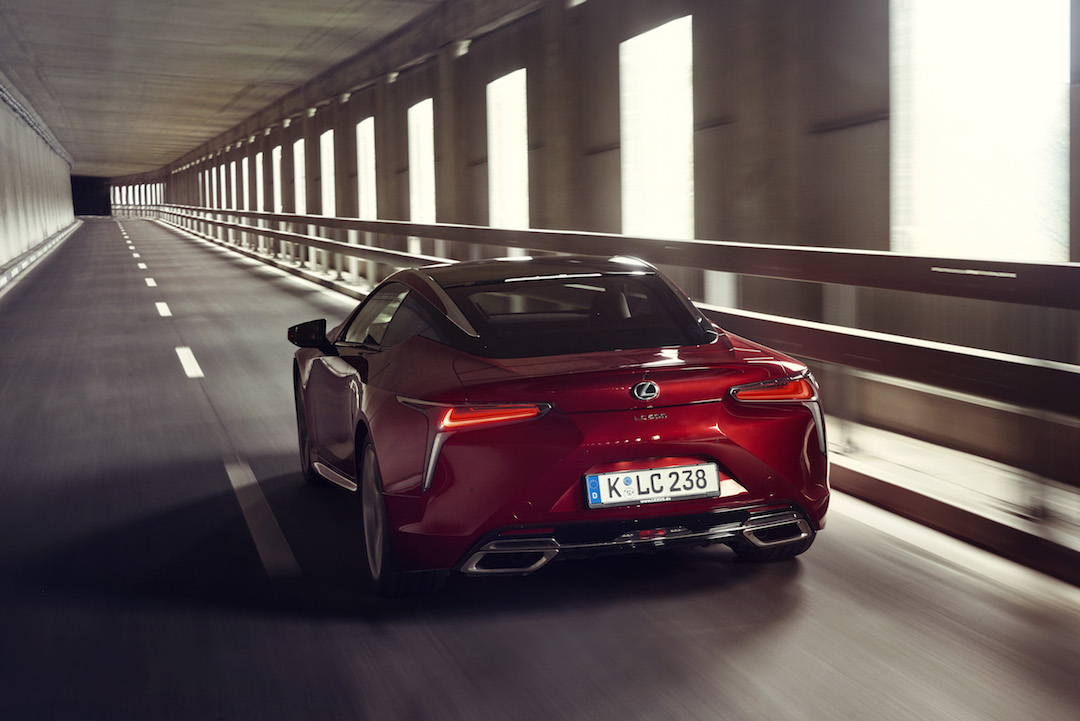
As for that V8 engine, though, it’s close to being a masterpiece. True, at 477hp and with 540Nm of torque, it’s well behind the power curve when you start comparing it to BMW M or Mercedes AMG products, but the crucial difference is that the Lexus engine has no turbos. That’s both blessing and curse, to be honest. It’s a curse, because the Co2 figure, at 263g/km, is almost ludicrously high by anything other than Texan standards. It’s a blessing, though, because of the noise. There’s none of the cartoony gurgling and spitting of an AMG V8 here, but instead just the unfettered soundtrack of an old-school engine breathing air and ambient pressure. It doesn’t woofle much at tickover (Lexus’ refinement standards simply wouldn’t allow that) but as the revs climb, so the under-bonnet orchestra starts to tune up, and as you reach for the redline, so the engine begins to crackle and howl, more like a seventies racing engine than an American muscle car. Down on power? Yes it is. Would you care? Probably not — it’s hardly slow and the aural accompaniment makes it worth the cost in horses.

The ten-speed automatic gearbox is as good as you could possibly hope it to be, too. Yes, there’s occasionally a slight hesitation when going for kickdown, and there’s literally no point in using the gearchange paddles to do it yourself, simply because who can choose from that many gears? It is exceptionally smooth and quick-shifting though, with a torque-convertor lockup system that allows Lexus to claim that it’s as fast, or faster, at changing gears than any of the dual-clutch systems on offer. I can only offer it the highest compliment of any gearbox; once you put it in D, you simply forget that it’s there.

We’ve passed back up the Julier now, hooked a left, and are now descending the St Bernard pass, heading for Milan and a waiting aircraft. This is where the LC comes into its GT self. It’s just so comfortable, so good at knocking off miles and kilometres, that travel becomes pretty effortless.
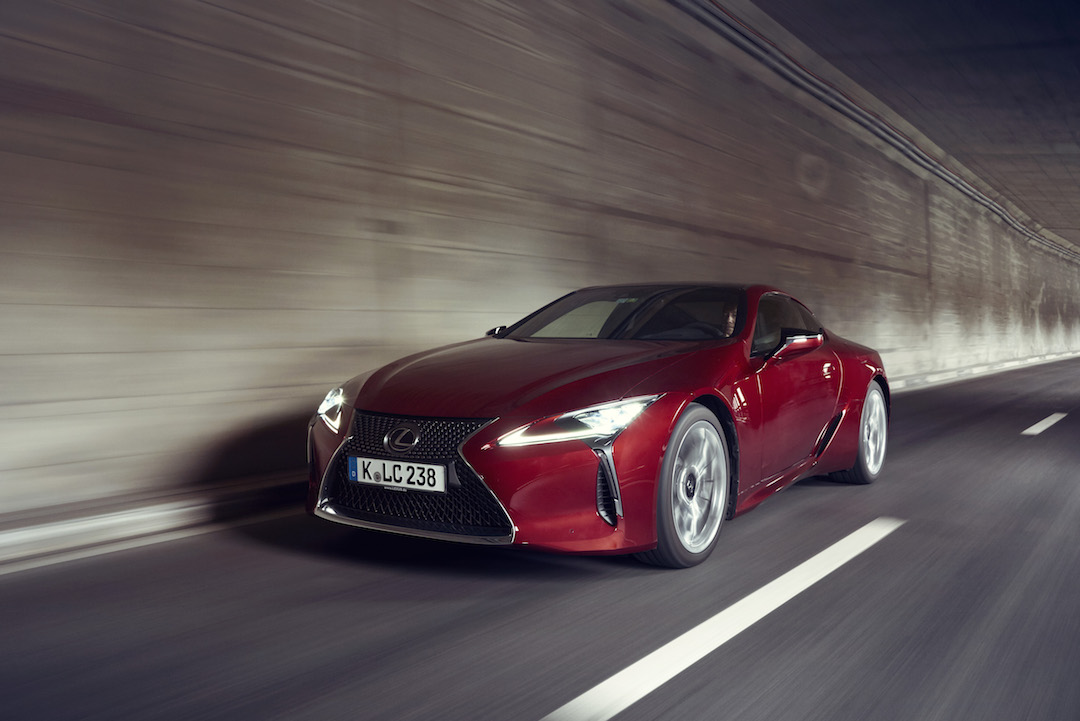
The cabin has one or two miss-steps (such as the awkward haptic touch-pad that controls the infotainment system — why doesn’t Lexus just stop trying to re-invent the click-wheel?) but for the most part, it’s exceptionally good in here. I love the way the lines on the doors continue in a huge sweep that runs around the bottom of the windscreen, and love too the way the metal door handles emerge, frameless, from the doors. The seats re just right too — hugging enough to be supportive in corners, but not so much that you feel you can’t have a second croissant for breakfast. The instruments, a mixture of digital screens and physical, moving bezel, are copied more or less directly from the old LF-A (and the smaller RC Coupe) and look great.
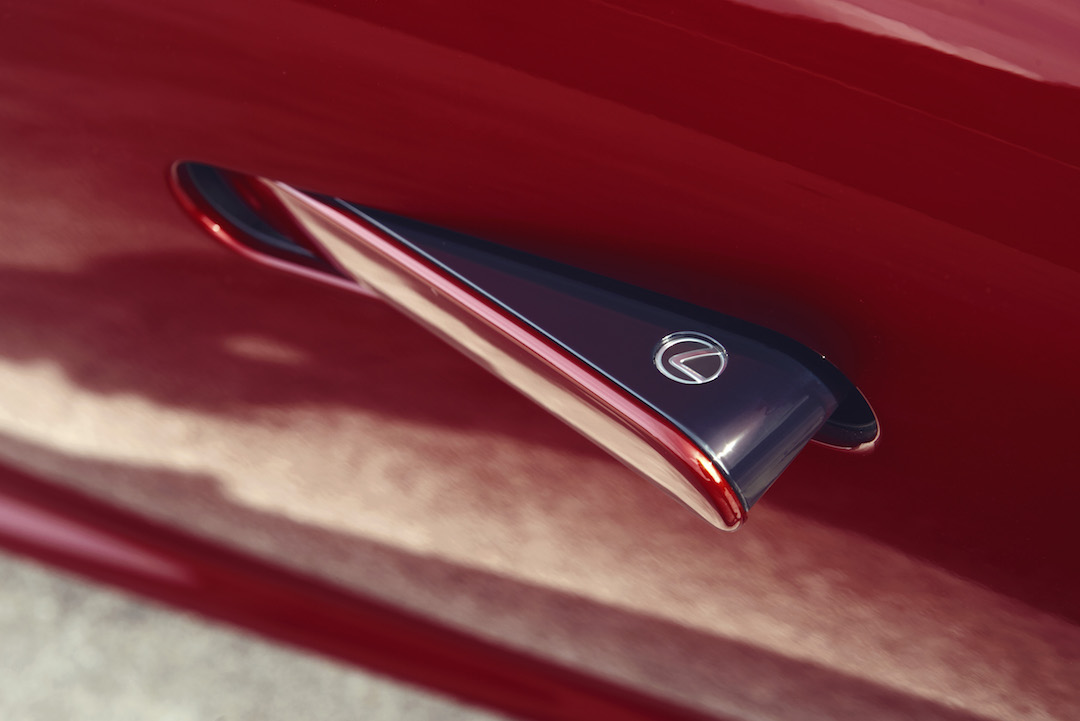
It’s hushed inside too, with just a touch of wind noise around the mirrors at high speed, and comfortable too. All Lexus’ have been comfy, more or less, but the LC is the first to mix true high-speed precision with this sort of damping comfort and long-range usability. The only flaw seems to be a slight sense of fidget from the rear end at times, which could get wearing if you were driving around town a lot.
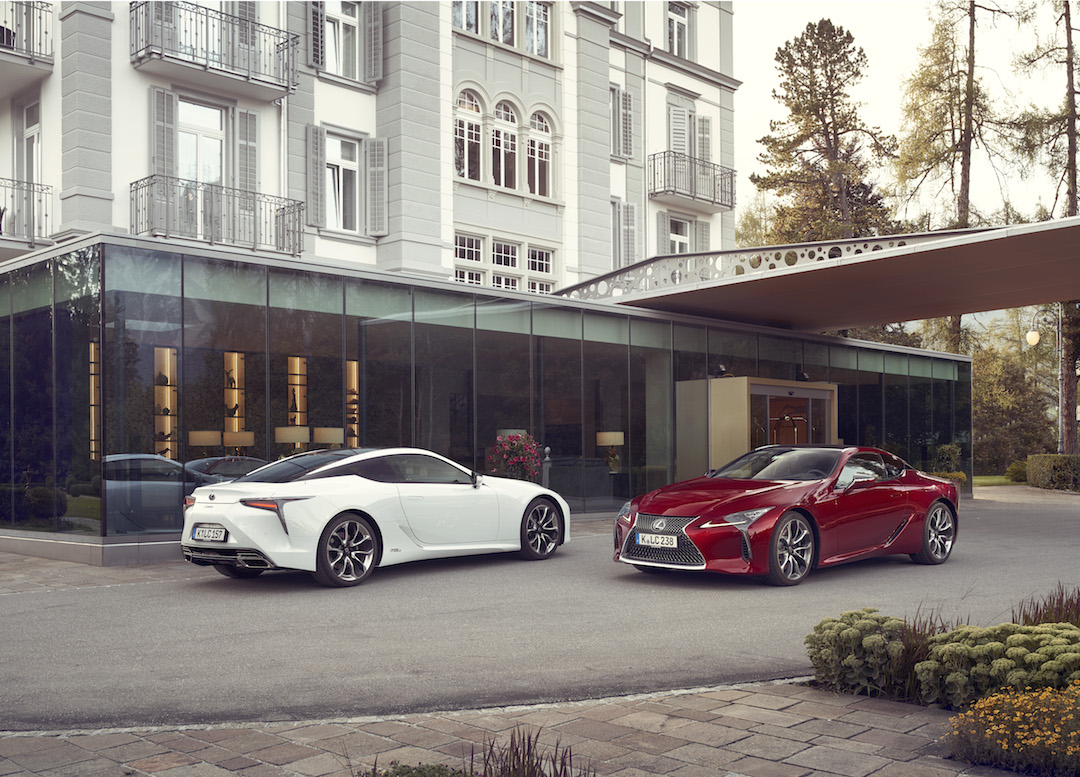
Of course, in the past, that’s exactly what driving a Lexus Hybrid would have encouraged you to do. Lexus’ part-battery cars just like their Toyota siblings, were tuned for maximum in-town economy and didn’t especially care for life outside the Tokyo ring-road. That has been changing of late, and the LC500h Hybrid, into which we’ve now switched, is the totem of that change. Chief Engineer Koji Sato explained: “In the past, people only associated hybrid with ‘eco’. We wanted to broaden that perception and create a true high-performance powertrain.”
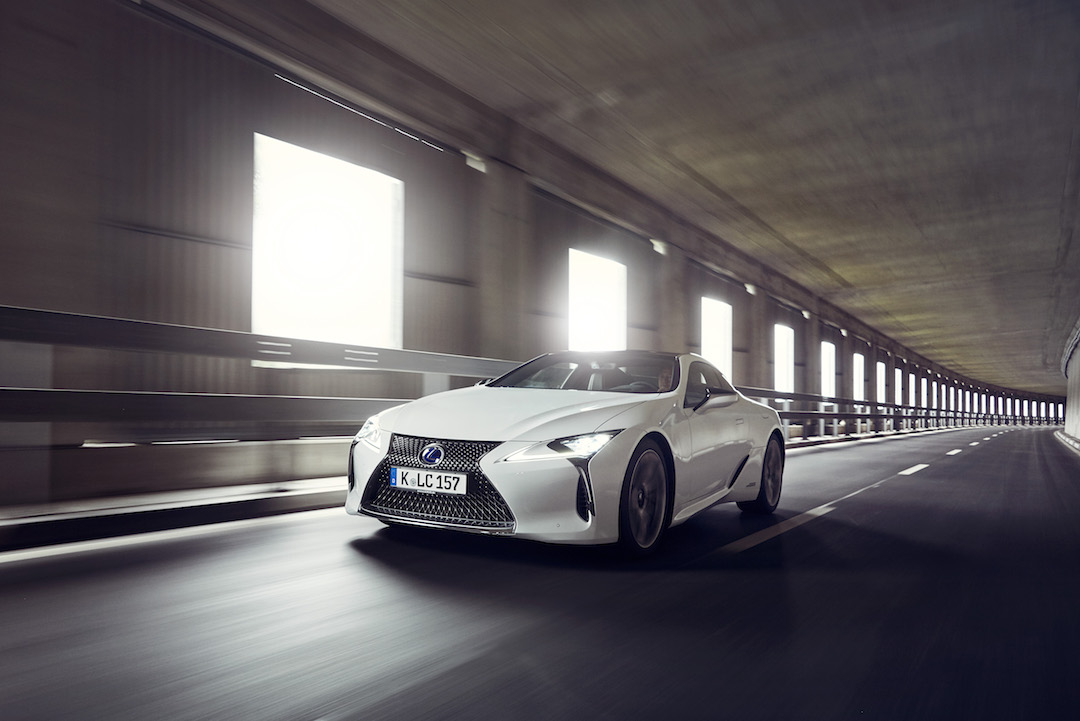
At first, the LC500h Hybrid’s powertrain seems familiar — it’s the same 3.5-litre V6 with battery assistance that Lexus has been using since the original GS450h. It seems, but it isn’t; this is actually a new engine, and together with its electric motor it produces 358hp, and while Lexus doesn’t quote a single torque figure (you can’t accurately measure the torque of a hybrid at any one point, it’s more about potential) the engine has 348Nm and the electric motor 300Nm. It also uses a new battery, a lithium-ion one (as used in your phone) which replaces the older, heavier, bulkier nickel-cadmium battery. The biggest change, though, is in the transmission. Lexus (as Toyota) has always used a CVT constant velocity transmission for its hybrids, which is great from the point of view of efficiency, but it does tend to leave the engine droning on at high rpm when you’re looking for power. That would not at all suit a sexy, slinky coupe such as this, so Lexus has developed a new transmission called the Multi Stage Hybrid System. This uses an electric CVT (two electric motors pushing against each other) with three artificial steps, that act like gears. To the back of that is bolted a conventional automatic transmission, with three speeds. Three automatic speeds times three CVT steps equals a theoretical nine speeds, and with an overdrive on top, that’s ten. Lexus claims that it retains the efficiency of a normal CVT, but with the feel of a conventional transmission.
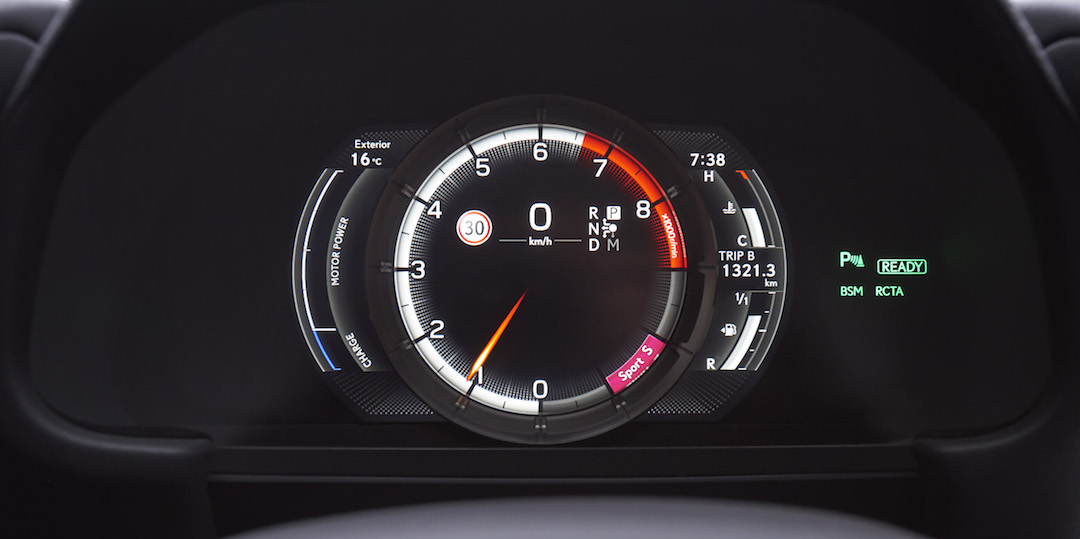
Sadly, it doesn’t. It’s better by far than the whining, graceless CVTs we’ve been used to, but it’s still not as sure of itself as a conventional auto. As for full power, the engine revs up, and… and… keeps revving. You’re gaining speed, but the V6 is starting to drone a little. So you pull one of the steering-wheel gearshift paddles to change up and… nothing much happens, no, still nothing, there it goes, we’ve changed up. It’s still not totally satisfactory, still prefers a gentler touch to a good ragging up and down a mountain road, and still something of an oddity.
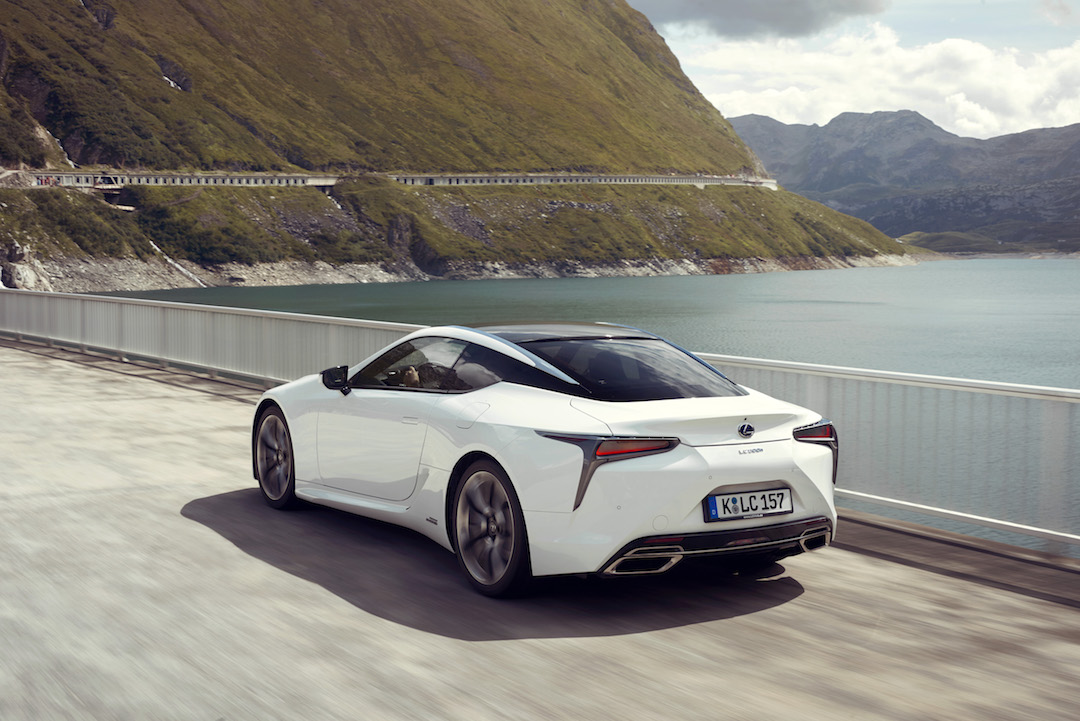
Still, the Hybrid as a whole might just still be the LC of choice. It starts at the same £76,595 price as the V8, comes with the same equipment, and yet scores a relatively saintly 145g/km of Co2 emissions rating. And we squeezed better than 30mpg out of it when the V8 was struggling to get above 17mpg. And it’s quick, barely 0.3secs behind the V8 in the 0-60mph run (4.4sec for the V8, 4.7sec for the Hybrid).
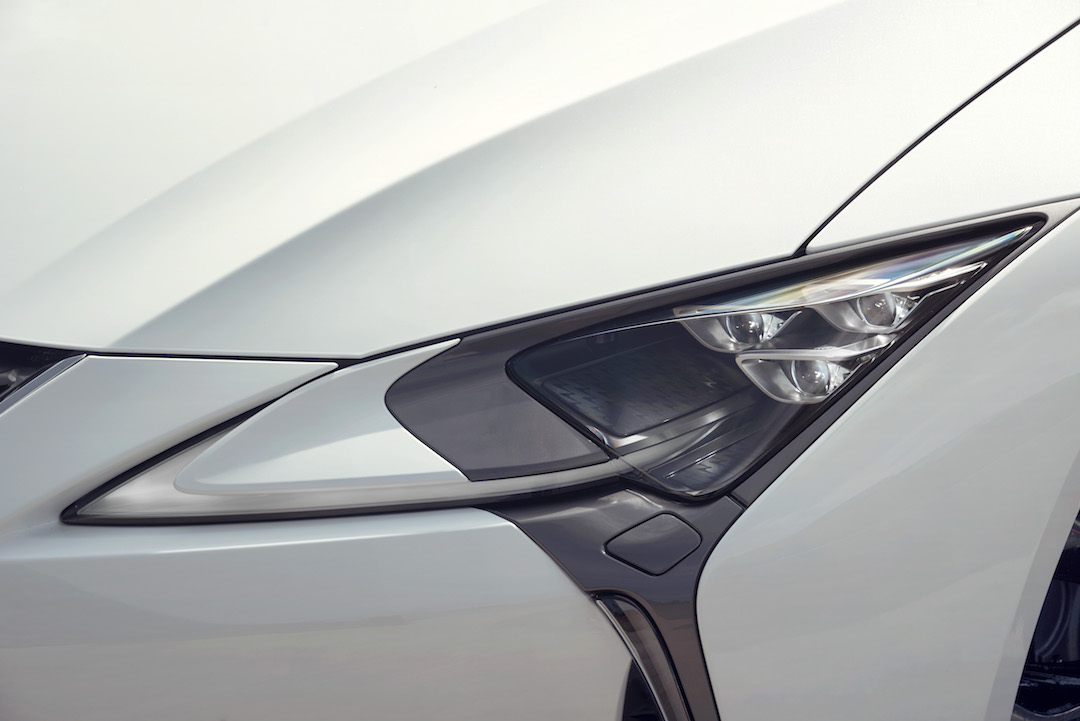
Our Test hybrid didn’t have the rear-wheel steering or diff of the V8 car, but it was still hugely enjoyable to thrash around, with the same brilliant steering, and the same benign chassis balance. Given its ability to run around town on largely electrical power, it’s smack dab in the middle of the environmental zeitgeist, yet its sexy, low-slung styling draws as many looks as a Ferrari. That’s no bad combination, a real cake-and-eat-it kind of car.
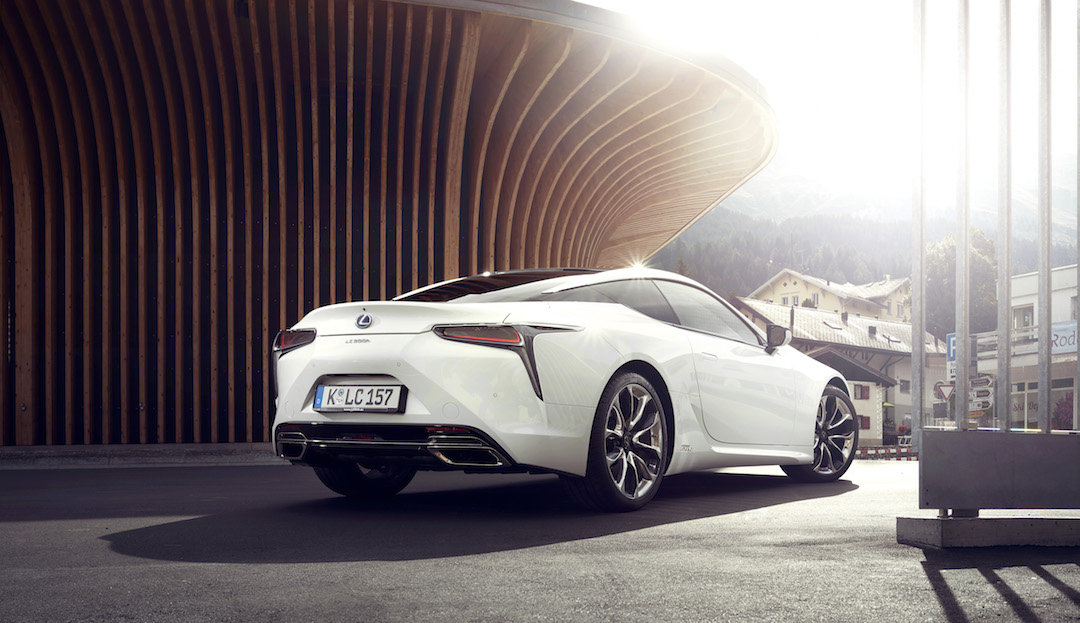
We finally slink down the Autostrada to Milan, and swing into the airport car part. Malpenza airport looks and feels dingy and down-at-heel after the sparkling air and sunshine of the Alps. There are no shimmering lakes here, no lofty peaks — just parking restrictions and the queue for Easyjet checkin. Up there, the world felt like the world of the classic GT car. Endless roads with endless corners and more gorgeous scenery than you could shake a Toblerone at. Down here, it’s all congestion, noise, pollution, and hassle.
Somehow, the LC, especially the Hybrid, works perfectly in both worlds. Maybe Mother Nature just wanted to give us a little extra test.
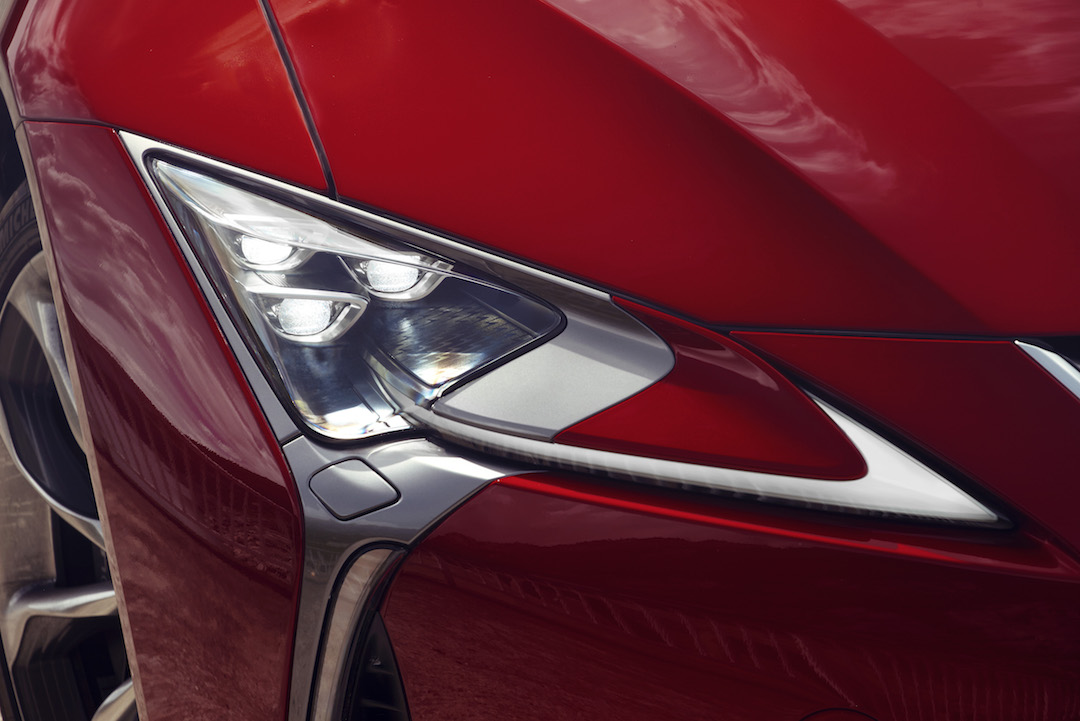
CLICK TO ENLARGE










